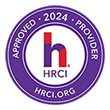Work-from-Home Safety: Meeting OSHA Compliance Standards
Every organization must adhere to OSHA compliance requirements and should have a meaningful policy in place that clearly defines its expectations for remote employees. That policy should include responsibilities, workstation design, applicable OSHA requirements and timely reporting of work-related injuries and illnesses.
Otherwise, employees may create an environment that compromises their health and safety - as well as that of their family.
In this 60-minute program you’ll discover practical strategies for implementing an effective work-at home-policy for your employees. We’ll address:
- The OSHA standards that apply to the work at home environment
- Which injuries and illnesses that occur while working at home are OSHA recordable
- Best practices for selecting and installing the right home office equipment
- Is the PPE employees are using approved and appropriate for the work they are doing?
- Employer’s responsibility for ensuring compliance when employees work from home
Program Highlights
OSHA Policies for Protecting Remote Workers & Reporting Injuries
- Applicable OSHA standards in a work at home environment
- Characteristics of potential work at home injuries and illnesses
- Which injuries and illnesses are recordable when employees work at home
- Is mandatory OSHA training still required for employees working at home
Best Practices for Creating a Safe Home-Work Environment
- Steps to identifying and eliminating risks and reducing injuries and illnesses
- Preparing a workstation designed to meet your work requirements
- Tips for selecting office and other equipment for working at home
- Protecting family members from work at home exposures
Developing an Effective Work-from-Home Policy
- What should be covered in your remote work policy
- Keys to communicating your expectations to your employees
- How you can enforce your policy with workers off-site
- Encouraging feedback regarding the company safety program
About the Speaker
Jack Fearing, CPEA, is the Managing Partner for Fearing International Group LLC which is a Department of Defense (DOD) approved Veteran-Owned Small Business (VOSB). He has more than 35 years of experience in occupational safety & health management in both general industry, construction and consulting for Fortune 500 corporations.
- His experience includes EHS Director for a global defense contractor, an audit program director for multi-national manufacturing company and audit team leader for a leading pharmaceutical company.
- He is a certified Health & Safety auditor, an OSHA-authorized 10/30-hour General Industry instructor, and a professional member of the American Society of Safety Professionals (ASSP). He was the New Jersey Chapter Safety Professional of the Year (SPY) for 2019. He is a graduate of the University of Massachusetts and Boston University. He is retired US Army LT Colonel, Senior Army Aviator and Aviation Safety Officer.
- Jack is an accomplished speaker and author and has been published in "CoatingsPro", "Today's Facility Manager", "Facility Safety Management," and various American Society of Safety Professionals (ASSP) professional journals on numerous safety topics. He is a frequent speaker and trainer for local, regional and international venues.
Program Benefits
Discover how to develop a work-from-home policy that keeps you compliant with OSHA standards, reporting requirements – and keeps your employees and their families safe.
HRCI Credits

This program has been approved for 1 (HR (General)) recertification credit hour toward aPHRTM, aPHRiTM, PHR®, PHRca®, SPHR®, GPHR®, PHRiTM and SPHRiTM recertification through the HR Certification Institute. Learn more at hrci.org
BCSP Points

For this one hour program you may claim 0.05 continuance of certification points (COC's) from the Board of Certified Safety Professionals (BCSP).
Please submit a request to obtain proof of your participation and a certificate of attendance will be emailed within 2-3 days.
Purchase this On-Demand Workshop
Work-from-Home Safety: Meeting OSHA Compliance Standards
$199 + applicable taxes
You will receive access to the live event(s) which includes a copy of the speaker's presentation, real-time training with our expert instructor, and an interactive question & answer period. Two to three business days after each live training concludes, an email is sent to registrants which contains a link for unlimited access to the on-demand recording you can revisit & review.
You'll receive a link to access the recording(s) in your order confirmation email. On-demand recordings also include a copy of the speaker's presentation and the ability to submit your questions to the expert, for up to 7 days after viewing.
$499 + applicable taxes
You will receive access to the live event(s) which includes a copy of the speaker's presentation, real-time training with our expert instructor, and an interactive question & answer period. Two to three business days after each live training concludes, an email is sent to registrants which contains a link for unlimited access to the on-demand recording you can revisit & review.
You'll receive access to our full library of on-demand trainings along with the speaker's presentation and handouts for each event.
$899 + applicable taxes
You will receive access to the live event(s) which includes a copy of the speaker's presentation, real-time training with our expert instructor, and an interactive question & answer period. Two to three business days after each live training concludes, an email is sent to registrants which contains a link for unlimited access to the on-demand recording you can revisit & review.
You'll receive access to our full library of on-demand trainings along with the speaker's presentation and handouts for each event.
Guaranteed to be Good
All training experiences include a 7-day 100% money-back guarantee.
Full-Team Pass
Simply share the invite link with your team so you can learn and grow together!
Yours Forever
The event recording and materials are yours to rewatch and share as you choose.


